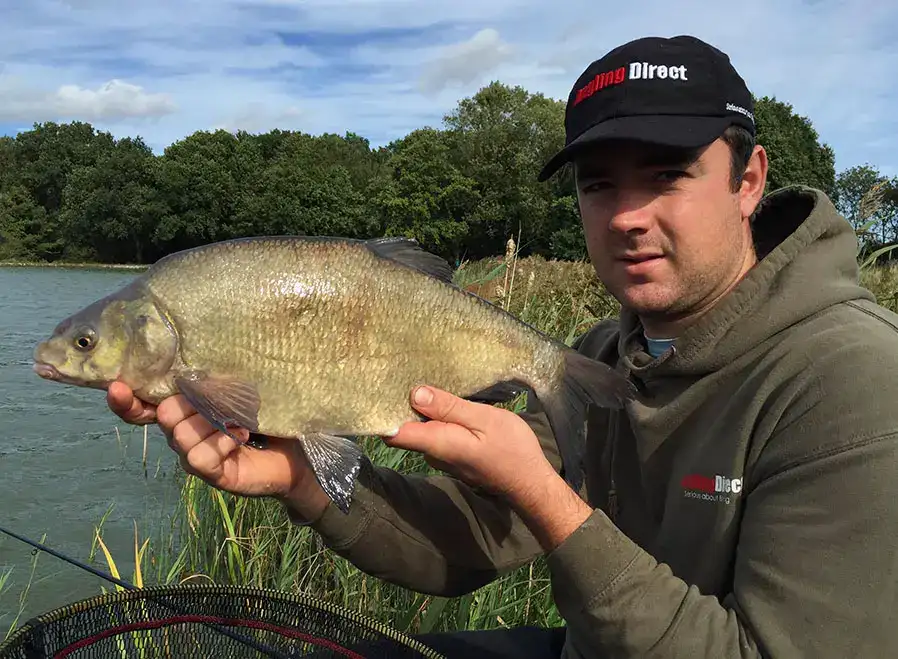This is a demo store. No orders will be fulfilled.
How to Catch More Bream



 Tackle As mentioned, they can be caught on all manner of different tactics but without doubt feeder fishing for them is best. A standard feeder fishing rod, around 12ft in length, with a softish quiver tip will be more than ample. Match this with a 4000 sized reel, loaded with around 6lb mono, and you’ll have a perfect bream fishing set-up. More specialised tools are available, for example, if you really needed to fish for them at range you’d perhaps look at a slightly more powerful rod and even a braided mainline on your reel, but that’s probably a blog for another day.
Tackle As mentioned, they can be caught on all manner of different tactics but without doubt feeder fishing for them is best. A standard feeder fishing rod, around 12ft in length, with a softish quiver tip will be more than ample. Match this with a 4000 sized reel, loaded with around 6lb mono, and you’ll have a perfect bream fishing set-up. More specialised tools are available, for example, if you really needed to fish for them at range you’d perhaps look at a slightly more powerful rod and even a braided mainline on your reel, but that’s probably a blog for another day. Rigs Rig wise, it’s probably best to keep things nice and simple, and a simple running feeder rig will be absolutely fine. Personally I like to use a standard open ended feeder, choosing a caged model if the water is shallow (4-5ft) and a solid bodied model if the water is deeper (6ft+). In the deeper water, the solid bodied feeder just helps keep the bait in the feeder, especially as it’s falling through the water column for longer.
Rigs Rig wise, it’s probably best to keep things nice and simple, and a simple running feeder rig will be absolutely fine. Personally I like to use a standard open ended feeder, choosing a caged model if the water is shallow (4-5ft) and a solid bodied model if the water is deeper (6ft+). In the deeper water, the solid bodied feeder just helps keep the bait in the feeder, especially as it’s falling through the water column for longer. Bait Obviously the tackle and rigs you are using are important but probably the most important thing is bait, especially if you want to enjoy a bumper day’s fishing! A shoal of bream are probably best compared to an underwater herd of cows, slowly drifting from spot to spot grazing on anything that looks remotely tasty!
Bait Obviously the tackle and rigs you are using are important but probably the most important thing is bait, especially if you want to enjoy a bumper day’s fishing! A shoal of bream are probably best compared to an underwater herd of cows, slowly drifting from spot to spot grazing on anything that looks remotely tasty!
 Hook bait wise, any of the above (with the exception of the ground bait of course!) will catch. A dendrobaena worm is probably one of my favourites, though, and recently I’ve been experimenting using them in conjunction with a quick-stop. By doing this, it eliminates the danger of the worm masking the hook point and offers a nice, neat, effective presentation. A top tip, too, is to just nip the tail off before you cast it out, as this will send extra scent into the water and perhaps allow the bream to find it quicker.
Hook bait wise, any of the above (with the exception of the ground bait of course!) will catch. A dendrobaena worm is probably one of my favourites, though, and recently I’ve been experimenting using them in conjunction with a quick-stop. By doing this, it eliminates the danger of the worm masking the hook point and offers a nice, neat, effective presentation. A top tip, too, is to just nip the tail off before you cast it out, as this will send extra scent into the water and perhaps allow the bream to find it quicker.
